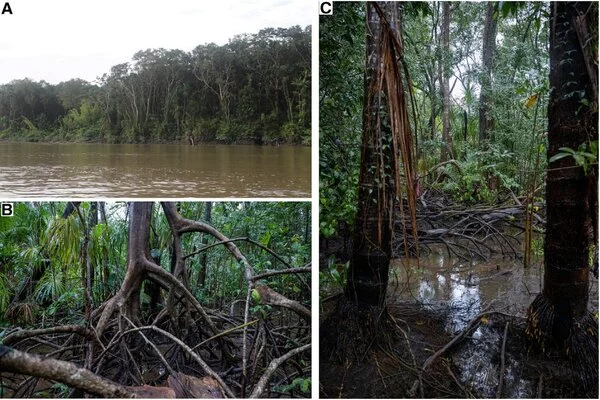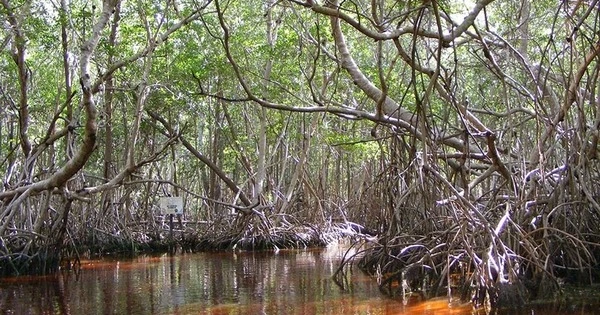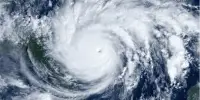Mangroves are tropical forests that are both ecologically and economically important. They are extremely productive ecosystems, with primary production rates comparable to tropical humid evergreen forests and coral reefs. Despite occupying only 0.5% of the global coastline, mangroves contribute 10-15% of coastal sediment carbon storage and export 10-11% of particulate terrestrial carbon to the ocean. Their disproportionate contribution to carbon sequestration is now seen as a means of conservation and restoration, as well as a way to help reduce greenhouse gas emissions.
Researchers have created a model that can estimate the productivity of mangrove forests at large scales. A remote sensing-based productivity model that took into account the effects of tidal inundation was created. Comparisons with carbon measurements from carbon flux towers revealed that the model accurately estimated the productivity of mangrove forests in China. The findings highlight the utility of this type of model in determining the capacity of mangrove forests to store carbon.
Mangrove forests store huge amounts of carbon but figuring out how much is stored globally is challenging. Now, researchers from Japan have developed a new model that uses remote sensing of environmental conditions to determine the productivity of mangrove forests.
We compared the model’s results to productivity measurements from carbon flux towers, which measure carbon changes between the mangrove canopy and the atmosphere. We discovered that our model could accurately estimate mangrove productivity.
Yuhan Zheng
Researchers from The University of Tokyo’s Institute of Industrial Science developed a model to assess the productivity of coastal mangroves in China in a recent study published in Scientific Reports. Mangroves grow along tropical coastlines where they are frequently inundated by seawater. These distinct species are well adapted to tropical coastal habitats and have special characteristics such as aerial roots and salt-tolerant tissues that allow them to thrive in changing conditions. As a result, mangrove forest productivity is influenced by a variety of environmental factors, including sea surface temperature, salinity, and photosynthetic active radiation.
In the past, light use efficiency models have been used to assess the productivity of terrestrial forests but there are no such models for more complex mangrove ecosystems.
Study finds mangrove soil held around 6.4 billion metric tons of carbon in 2000. Between 2000 and 2015, up to 122 million tons of this carbon was released due to mangrove forest loss – roughly equivalent to the annual emissions of Brazil. More than 75 percent of these soil carbon emissions came from mangrove deforestation in just three countries: Indonesia, Malaysia and Myanmar.

According to research, at least 35% of the world’s mangrove forests may have been lost between 1980 and 2000. Mangroves are being cleared for a variety of reasons, including shrimp farms and other forms of aquaculture, as well as for their wood. Mangroves are also dependent on the presence of freshwater and can die when dams and other developments restrict river flow. Scientists also believe they are at risk of mass drowning as sea levels rise due to global warming.
“Previous attempts to model mangrove productivity used field measurements and produced estimates at a local scale,” says Yuhan Zheng, the study’s lead author. “However, global assessments are required to truly understand mangroves’ capacity to store carbon, and these require measurements of environmental conditions on a much larger scale.”
To do so, the team used satellite data to create a productivity model tailored to mangroves. Remote sensing can be used to collect information about the environment over large areas and over time. The researchers created a model that took into account the effects of tidal inundation and then combined it with satellite data on photosynthetically active radiation to estimate the productivity of mangrove forests along China’s coastline.
“We compared the model’s results to productivity measurements from carbon flux towers, which measure carbon changes between the mangrove canopy and the atmosphere,” says Yuhan Zheng. “We discovered that our model could accurately estimate mangrove productivity.”
The model also outperformed the tested terrestrial model. As the world seeks ways to mitigate the effects of climate change, there is a growing recognition of the value of intact mangrove forests. This new model is an important step toward understanding mangrove carbon storage capacity.
















